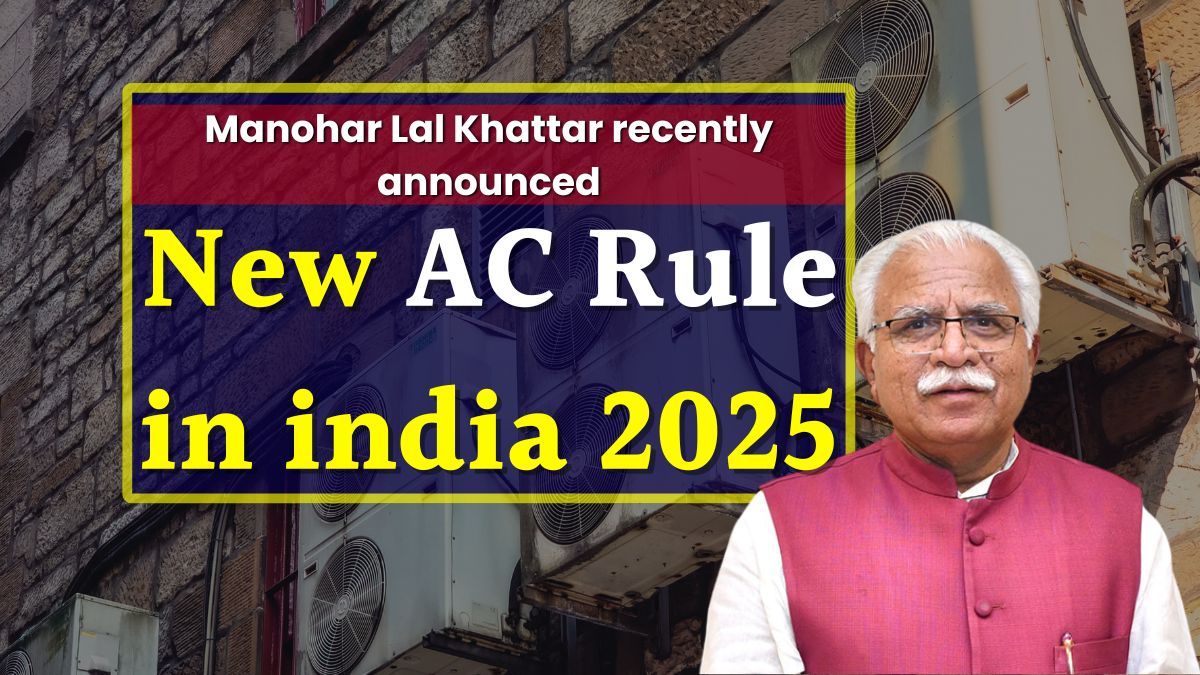The Indian government is stepping in with a bold new move. A temperature standardisation rule for air conditioners is being introduced. Once implemented, ACs across the country will only be allowed to operate between 20°C and 28°C.
No more 16°C settings. No more freezing indoors while it’s blazing outside.
Union Power Minister Manohar Lal Khattar recently announced,
So what changes?
- Current AC range: 16°C to 30°C
- New standard: 20°C (minimum) to 28°C (maximum)
That means you won’t be able to set your AC temperature below 20°C anymore.
Why Is This Rule Being Introduced?
It’s easy to think, “Why should the government tell me how to use my AC?”
But once you hear the reasons, you might actually feel relieved.
Here’s why it matters:
- Huge electricity savings: Air conditioners use about 50 gigawatts of electricity, which is 20% of India’s total power consumption.
- Energy crisis during peak months: In summer, people often drop their ACs to the lowest setting. This puts massive pressure on the power grid.
- A simple change = big impact:
Studies show that raising your AC temperature by just 1°C saves 6% in energy use.
Imagine what that means if every household participates.
According to the University of California, Berkeley, this new rule could help save up to 60 gigawatts of electricity demand by 2035 and prevent spending ₹7.5 trillion on new power infrastructure.
What Does This Mean for You?
You might be wondering, “Will I feel less comfortable if I can’t cool below 20°C?”
But the truth is, most people don’t actually need extreme cooling. The ideal indoor temperature for comfort and health is around 24°C–26°C.
Here’s what you gain:
- Lower electricity bills
- Less strain on your AC unit
- Reduced environmental impact
- More stable power supply across the country
This is about more than saving rupees. It’s about making homes more efficient and ensuring power reaches everyone—especially during summer blackouts.
What Should You Do Now?
No action is required yet—but here’s how you can prepare:
Step-by-Step Guide:
- Start adjusting gradually – If you’re used to 18°C, try moving up to 22°C or 24°C.
- Use ceiling fans along with ACs – Helps circulate cool air and makes higher temps feel comfortable.
- Seal your rooms – Prevent hot air from leaking in to reduce AC load.
- Service your AC regularly – A clean, well-maintained unit runs more efficiently.
- Educate others – Talk to your family, friends, or neighbours about the benefits.
By the time the rule rolls out, you’ll already be ahead of the game.
FAQs
1. Is the AC temperature rule mandatory for everyone?
Yes, once it’s officially implemented, AC manufacturers will need to comply. Over time, consumers will only be able to use these temperature settings.
2. What if I already have an older AC that allows lower temperatures?
For now, older units may not be affected immediately. But future updates or regulations might encourage or enforce retrofitting.
3. Will this rule apply to commercial spaces too?
Yes, although details on sector-wise enforcement haven’t been fully announced yet.
4. Will I still feel cool at 24°C or 25°C?
Absolutely. Combine it with proper insulation or a ceiling fan and you’ll be surprised how comfortable it feels.



